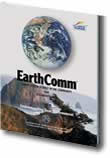Below are storylines that were designed by Cheryl Mosier, an Earth Science Teacher at Columbine High School in Littleton, Colorado.
Big Idea:
- Earth’s dynamic equilibrium system contains subsystems from atoms to planetary spheres. Materials interact among these subsystems due to natural forces and energy that flows from sources inside and outside of the planet. These interactions, changes, forces and flows tend to occur in offsetting directions and amounts. Materials tend to flow in chains, cycles and webs that tend toward equilibrium states in which energy is distributed as uniformly as possible. The net result is a state of balanced change or dynamic equilibrium, a condition that appears to have existed for billions of years.
- Change through time produced Earth, the net result of constancy, gradual changes, and episodic changes over human, geological, and astronomical scales of times and space.
- Fluid spheres within the Earth system include the hydrosphere, atmosphere, and cryosphere, which interacts and flow to produce ever-changing weather, climate, glaciers, seascapes, and water resources. These affect human communities, shape the land, transfer Earth materials and energy, and change surface environments and ecosystems.
- Dynamic environments and ecosystems are produced by the interaction of all the geospheres at the Earth’s surface, and include many different environments, ecosystems, and communities that affect one another and change through time.
|
|
Activity 1 – High-Gradient Streams |
Activity 2 – Low-Gradient Streams |
Activity 3 – Sediments in Streams |
Activity 4 – Rivers and Drainage Basins |
Activity 5 – Parkland Field Study |
|
Key Evidence Learned |
- characteristics of high-gradient streams - hazards and benefits from high-gradient streams |
- characteristics of low-gradient streams - hazards and benefits from low-gradient streams |
- describe and classify sediments - what happens to sediments as they travel in streams - relationship between stream velocity and particle size - relationship between transport distance and sediment size |
- topographic maps - drainage basins - interactions between communities and river systems |
- reservoirs, flux, inflows and outflows - changes in stream systems |
Connection to: |
|||||
|
Big Idea |
- landforms made by high-gradient streams - hazards and benefits - environments and ecosystems |
- landforms made by low-gradient streams - hazards and benefits - environments and ecosystems |
- how water weathers and erodes particles - deposition processes |
- how drainage basins impact humans |
- how communities rely on reservoirs for water supplies - what flux, inflows and outflows are and how humans impact them |
|
Real Life and Chapter Challenge |
- streams in Colorado - erosion and deposition processes |
- streams in Colorado - erosion and deposition processes |
- sedimentary layers in Colorado - how particle size is determined by distance and velocity |
- where drainage basins are in Colorado – which one we live in
|
- where reservoirs are in Colorado |
|
Geosphere |
- change over time of the Earth’s surface |
- change over time of the Earth’s surface |
- change over time of the Earth’s surface |
- what makes a drainage basin and what can change them |
- changes in stream systems |
|
Hydrosphere |
- how water in high-gradient streams weather and erode materials - how water creates landforms |
- how water in low-gradient streams weather and erode materials - how water creates landforms |
- how velocity and distance of water transport change particles |
- how water moves in a drainage basin |
- how water is stored in the environment |
|
Atmosphere |
|
|
|
|
|
|
Cryosphere |
|
|
|
|
|
|
Biosphere |
- ecosystems created by high-gradient streams |
- ecosystems created by low-gradient streams |
- ecosystem impacts of stream deposits |
- ecosystems in drainage basins |
- ecosystems in stream systems |

